Giant Garter Snake
- December 13, 2023
- 0 comment
The Giant Garter Snake (Thamnophis gigas) is a species of nonvenomous colubrid snake native to the wetlands of California’s Central Valley, United States. Known for its impressive size compared to other garter snakes, it can reach lengths of up to four feet. This semi-aquatic snake is characterized by its distinct olive-brown to dark green coloration, adorned with a yellowish stripe running down its back and alternating rows of smaller lateral stripes.

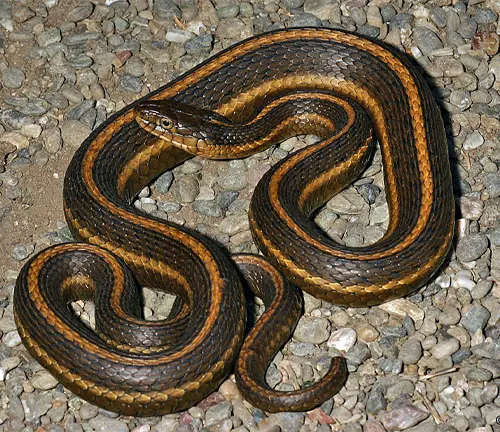
Its habitat preference revolves around the extensive marshes, ponds, and slow-moving streams within the Central Valley, making it a crucial component of the region’s delicate ecosystem. As a proficient swimmer, the Giant Garter Snake preys on small fish, amphibians, and invertebrates, utilizing its keen sense of smell and sight. Unfortunately, the species faces significant threats due to habitat loss, alteration, and fragmentation caused by agricultural development.
Conservation efforts are underway to protect and restore the wetlands essential for the Giant Garter Snake’s survival, highlighting the importance of preserving its unique ecological role in the biodiversity of California’s Central Valley.
| Characteristic | Description |
|---|---|
| Scientific Name | Thamnophis gigas |
| Size | Up to four feet |
| Coloration | Olive-brown to dark green with a yellowish stripe |
| Habitat | Wetlands, marshes, ponds, and slow-moving streams |
| Diet | Small fish, amphibians, and invertebrates |
| Behavior | Semi-aquatic, proficient swimmer |
| Range | Native to California’s Central Valley, USA |
| Threats | Habitat loss, alteration, and fragmentation due to agriculture |
| Conservation Status | Facing threats, conservation efforts in progress |
| Ecological Role | Plays a crucial role in the Central Valley ecosystem |
| Notable Feature | Larger size compared to other garter snakes |
Venomous or Not Venomous?
Dispelling common misconceptions, the Giant Garter Snake is a nonvenomous colubrid snake, despite its formidable appearance. Reaching lengths of up to four feet, its size may evoke concern, but this species relies on constriction rather than venom to subdue its prey. Understanding the truth behind its venom status contributes to a more accurate appreciation of this intriguing reptile.

Ecological Importance
Delving into the ecological importance of the Giant Garter Snake reveals its critical role in the delicate balance of California’s Central Valley ecosystem. As a semi-aquatic species, it navigates the wetlands with ease, playing a crucial part in controlling populations of small fish, amphibians, and invertebrates, thus contributing to the overall health and biodiversity of the region.
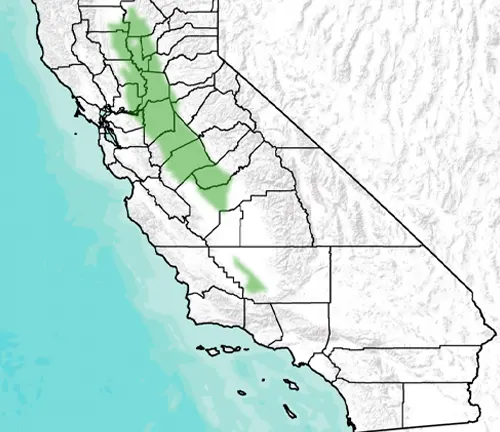
Habitat
Exploring the habitat preferences of the Giant Garter Snake unveils its affinity for wetlands, marshes, ponds, and slow-moving streams. Unfortunately, these habitats face threats from human activities such as agricultural development, leading to habitat loss, alteration, and fragmentation, posing challenges for the survival of this remarkable snake.
Behavior
Unraveling the behavior of the Giant Garter Snake, we discover a proficient swimmer with keen senses of smell and sight. Its behavior is adapted to its semi-aquatic lifestyle, allowing it to navigate and thrive in the watery landscapes of its chosen habitats. Understanding its behavior provides insights into its unique adaptations for survival.
Art And Culture
The Giant Garter Snake’s presence extends beyond the realms of biology; it permeates art and culture in the Central Valley. Its striking appearance and ecological significance have inspired various representations in local art, folklore, and stories, weaving the snake into the cultural fabric of the region.
Survival
Survival becomes a central theme when considering the challenges faced by the Giant Garter Snake. Threats such as habitat loss and alteration necessitate a deeper understanding of the species’ ability to adapt and endure in the face of changing landscapes. Examining its survival strategies sheds light on the resilience of this remarkable creature.
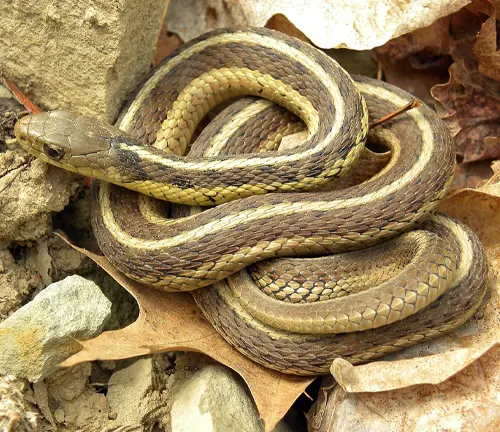
Conservation
Addressing the conservation aspect, efforts are underway to protect and restore the wetlands essential for the Giant Garter Snake’s survival. Conservation initiatives focus on mitigating habitat loss, raising awareness, and implementing measures to ensure the long-term viability of this species, underscoring the importance of human intervention in preserving biodiversity.
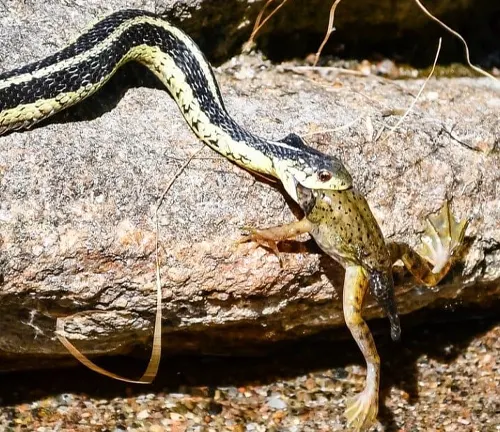
Common Food
Examining the common food sources of the Giant Garter Snake provides a glimpse into its dietary habits. Feeding on small fish, amphibians, and invertebrates, it occupies a unique ecological niche, contributing to the natural balance within its habitat.
Benefits
Understanding the benefits of the Giant Garter Snake extends beyond its significance. Controlling prey populations, indirectly influences the health of ecosystems, showcasing the interconnections of species and the broader positive impacts that preserving this snake can have on the environment.
Different Species
The Giant Garter Snake (Thamnophis gigas) is recognized as a single species with no officially recognized subspecies.
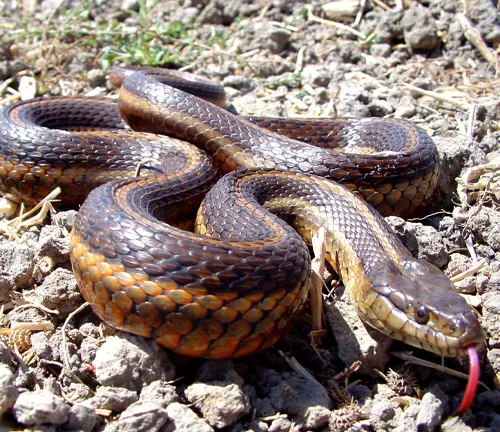
Conclusion
In conclusion, the Giant Garter Snake stands as a testament to the intricate beauty of nature, thriving in the wetlands of California’s Central Valley. From its botanical allure to its ecological role, this snake weaves a compelling narrative that intertwines with the region’s cultural and environmental tapestry. As conservation efforts continue, the hope is to ensure the Giant Garter Snake remains a symbol of resilience and coexistence in a rapidly changing world.
Frequently Asked Questions (FAQs)
- What is the Giant Garter Snake?
The Giant Garter Snake (Thamnophis gigas) is a nonvenomous colubrid snake native to the wetlands of California’s Central Valley. It’s known for its size and distinctive coloration. - How big does the Giant Garter Snake get?
The Giant Garter Snake can reach lengths of up to four feet, making it one of the larger species within the garter snake family. - Is the Giant Garter Snake venomous?
No, the Giant Garter Snake is not venomous. It relies on constriction rather than venom to subdue its prey. - What does the Giant Garter Snake eat?
The Giant Garter Snake primarily feeds on small fish, amphibians, and invertebrates, utilizing its keen senses to locate prey in its wetland habitat. - Where does the Giant Garter Snake live?
It inhabits wetlands, marshes, ponds, and slow-moving streams within California’s Central Valley. - Why is the Giant Garter Snake important ecologically?
The species plays a crucial role in controlling populations of small fish, amphibians, and invertebrates, contributing to the overall health and biodiversity of the Central Valley ecosystem. - What are the threats to the Giant Garter Snake?
Habitat loss, alteration, and fragmentation due to agricultural development pose significant threats to the survival of the Giant Garter Snake. - Are there different species or subspecies of the Giant Garter Snake?
As of the last knowledge update in January 2022, there are no officially recognized subspecies of the Giant Garter Snake. - How does the Giant Garter Snake behave?
It is a proficient swimmer with keen senses of smell and sight, adapted to a semi-aquatic lifestyle in its wetland habitat. - What is being done to conserve the Giant Garter Snake?
Conservation efforts focus on protecting and restoring wetlands, raising awareness, and implementing measures to mitigate habitat loss and ensure the long-term survival of the species. - Is the Giant Garter Snake dangerous to humans?
No, the Giant Garter Snake is not considered dangerous to humans. It is generally non-aggressive and poses no threat unless provoked.


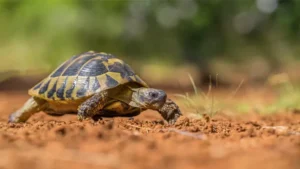
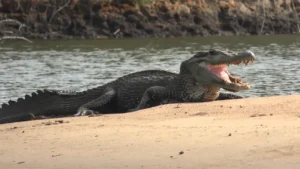
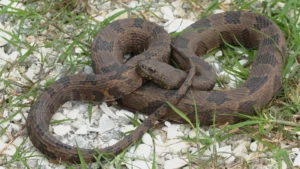
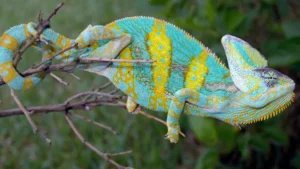


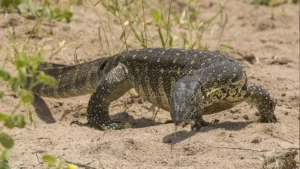

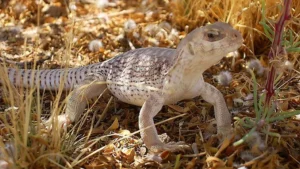
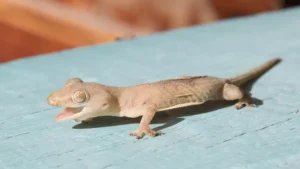

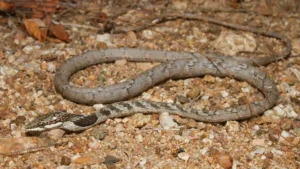
Leave your comment